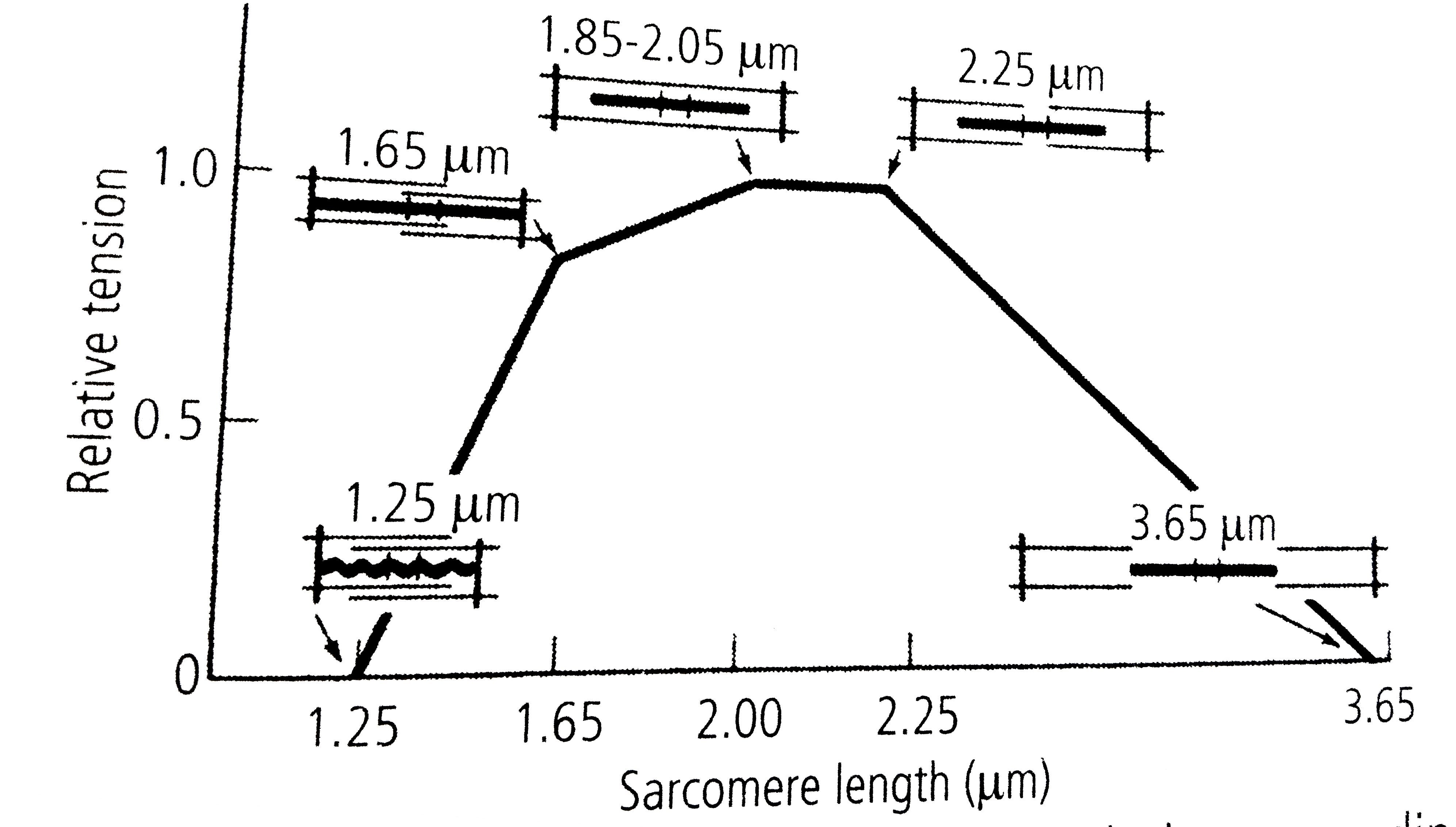At full muscle contraction the Z-lines attached to thin filaments are almost touching
A-band
I-band
Actin fibres
H-zone.
The correct Answer is:A
Step by step video, text & image solution for At full muscle contraction the Z-lines attached to thin filaments are almost touching by Biology experts to help you in doubts & scoring excellent marks in Class 12 exams.
Updated on:21/07/2023Topper's Solved these Questions
- LOCOMOTION AND MOVEMENTBOOK - DINESH PUBLICATIONCHAPTER - LOCOMOTION AND MOVEMENTEXERCISE - CHECK YOUR GRASP
10 Videos
- LOCOMOTION AND MOVEMENTBOOK - DINESH PUBLICATIONCHAPTER - LOCOMOTION AND MOVEMENTEXERCISE - CHECK YOUR GRASP
10 Videos
- LEAFBOOK - DINESH PUBLICATIONCHAPTER - LEAFEXERCISE - CYG
10 Videos
- MAMMALIA [MAMMA - BREAST]BOOK - DINESH PUBLICATIONCHAPTER - MAMMALIA [MAMMA - BREAST]EXERCISE - Brain Teasers - I
101 Videos
Similar Questions
Knowledge Check
The given graph shows length-tension curve for a typical vertebrate sarcomere.

By analysing the graph, what can you deduce regarding the muscle contraction?
(i) Neither the myosin filaments nor the actin thin filaments change in length when a sarcomere shortens or is stretched. Instead, it is the extent of ocerlap between actin and myosin filaments that changes.
(ii) The total tension produced by a sarcomere is proportional to the total number of cross-bridges that can interact with actin filaments, and this number in turn is proportional to the amount of of overlap between thick and thin filaments.
(iii) The tension produced by the muscle is maximal when the overlap between thick and thin filamentss allows the largest number of myosin cross-bridges to bind to actin.
(iv) Tension drops off with increased lenght, because the thick and thin filaments overlap less and fewer cross-bridges can bind.
Tension drops off with decreased length, because thin filaments at the two ends of the secromere begin to collide with each other, preventing further shortening.A(i) OnlyB(i),(iii) and (iv)C(i),(iii),(iv) and (v)D(i),(ii),(iii),(iv) and (v)Assertion: Mechanism of muscle contraction is expalained by sliding-filaments theory.
Reason: Contraction of muscle fibre takes place by the sliding of thick filaments over the thin filaments.AIf both assertion and reason are ture and reason is the corect explanation of assertionBIf both assertion and reason are ture but reson is not the correct explanation of assertionCIf assertion is true reason is falseDIf both assertion and reason are falseAccording to sliding filament theory of muscle contraction, the filament that move to shorten a muscle are
AMyosinBActinCCollagenDCreatine phosphate
The contraction of the muscle continues in sliding filament theory
View SolutionAccording to the sliding - filament model of muscle contraction, the molecules that moves to shorten a muscle are :-
View SolutionDuring contraction of muscles Ca2+ attaches to
View SolutionRead the following statements is context to muscle tissue and choose the correct answer .
(i) Excessive exercise results in anaerobic Respiration and forms lactic acid .
(ii) As per sliding filament theory of muscle contraction, the filament that moves to shorten a muscule is actin .
(iii) The muscles primarily involved in locomotion is striated muscles .
View SolutionAssertion : Contraction of a muscle fibre takes place by the sliding of the thin filaments over the thick filaments.
Reason : The central part of thick filament is not overlapped by thin filaments in a resting state.
View Solution
